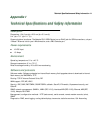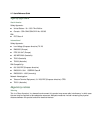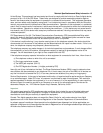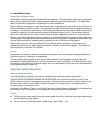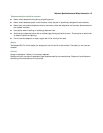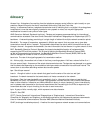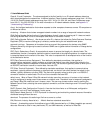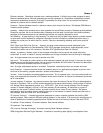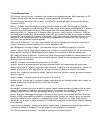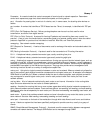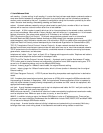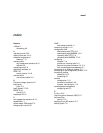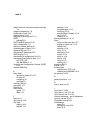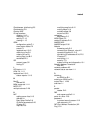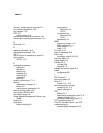Glossary 3
Ethernet address: Sometimes referred to as a hardware address. A 48-bits long number assigned to every
Ethernet hardware device. Ethernet addresses are usually expressed as 12-character hexadecimal numbers,
where each hexadecimal character (0 through F) represents four binary bits. Do not confuse the Ethernet
address of a device with its network address.
firmware: System software stored in a device’s memory that controls the device. The Netopia ISDN Router’s
firmware can be updated.
gateway: A device that connects two or more networks that use different protocols. Gateways provide address
translation services, but do not translate data. Gateways must be used in conjunction with special software
packages that allow computers to use networking protocols not originally designed for them.
hard seeding: A router setting. In hard seeding, if a router that has just been reset detects a network number
or zone name conflict between its configured information and the information provided by another router, it
disables the router port for which there is a conflict. See also non-seeding, seeding, seed router, and soft
seeding.
HDLC (High Level Data Link Control): A generic link-level communications protocol developed by the
International Organization for Standardization (ISO). HDLC manages synchronous, code-transparent, serial
information transfer over a link connection. See also SDLC (Synchronous Data Link Control).
header: In packets, a header is part of the envelope information that surrounds the actual data being
transmitted. In e-mail, a header is usually the address and routing information found at the top of messages.
hop: A single traverse from one node to another on a LAN.
hop count: The number of nodes (routers or other devices) a packet has gone through. If there are six routers
between source and destination nodes, the hop count for the packet will be six when it arrives at its destination
node. The maximum allowable hop count is usually 15.
host: A single, addressable device on a network. Computers, networked printers, and routers are hosts.
Host Computer: A communications device that enables users to run applications programs to perform such
functions as text editing, program execution, access to data bases, etc.
internet: A set of networks connected together by routers. This is a general term, not to be confused with the
large, multi-organizational collection of IP networks known as the Internet. An internet is sometimes also known
as an internetwork.
internet address, IP address: Any computing device that uses the Internet Protocol (IP) must be assigned an
internet or IP address. This is a 32-bit number assigned by the system administrator, usually written in the form
of 4 decimal fields separated by periods, e.g., 192.9.200.1. Part of the internet address is the IP network
number (IP network address), and part is the host address (IP host address). All machines on a given IP
network use the same IP network number, and each machine has a unique IP host address. The system
administrator sets the subnet mask to specify how much of the address is network number and how much is
host address. See also Class A, B, and C networks.
IP (Internet Protocol): A networking protocol developed for use on computer systems that use the UNIX
operating system. Often used with Ethernet cabling systems. In this manual, IP is used as an umbrella term to
cover all packets and networking operations that include the use of the Internet Protocol. See also TCP/IP.
IP address, IP host address, IP network address: See internet address.
IP broadcast: See broadcast.
IPX (Internet Package Exchange): A protocol used by Novell Netware networks.
ISDN (Integrated Services Digital Network): A method of transmitting data digitally over telephone lines.



